Color has a profound impact on human psychology and can significantly influence mood, emotions, and productivity. In the context of commercial painting, understanding color psychology can be a powerful tool for creating an environment that enhances workplace productivity. This article explores the connection between color and productivity in the workplace, providing insights into how strategic color choices during commercial painting projects can optimize employee performance and overall efficiency.
- The Influence of Colors on Productivity:
Colors evoke different psychological and emotional responses in individuals, which can impact their productivity levels. While the effects of colors can vary depending on cultural and personal factors, certain general associations have been observed:
- Blue: Known for its calming and soothing properties, blue instills a sense of tranquility and can promote focus, efficiency, and clear thinking.
- Green: Associated with nature and harmony, green is known to promote balance, concentration, and creativity. It can reduce eye strain and provide a refreshing atmosphere.
- Yellow: Yellow is often associated with energy, optimism, and positivity. It can stimulate mental activity, enhance mood, and foster creativity and innovation.
- Red: A high-energy color, red can stimulate excitement, passion, and urgency. It is best used sparingly in the workplace as excessive red can induce stress or distraction.
- Neutral Colors: Neutral colors like gray, beige, and white provide a clean and professional backdrop. They can help reduce visual clutter, promote a sense of calm, and provide a blank canvas for other accent colors.
- Strategic Color Selection:
When planning a commercial painting project, consider the nature of the work being performed and the desired outcomes. Here are some tips for strategic color selection:
- Identify the Purpose of Each Space: Different areas within a workplace serve different purposes. For example, collaborative spaces may benefit from energetic colors like yellow or orange to encourage creativity and engagement, while quiet areas or meeting rooms may benefit from calm, soothing colors like blue or green to promote focus and concentration.
- Balance and Contrast: Creating a balanced color scheme is crucial to avoid overwhelming or distracting employees. Use contrasting colors to create visual interest and highlight specific areas or features without causing visual fatigue.
- Consider Lighting Conditions: Lighting plays a significant role in how colors are perceived. Natural light and artificial lighting can alter the appearance of colors. Take into account the amount and type of lighting in each space when selecting colors to achieve the desired effect.
- Branding Integration: Incorporate your company’s branding colors strategically to foster a sense of identity and promote a cohesive workspace. Balance brand colors with other calming or stimulating colors to maintain a harmonious environment.
- Test and Gather Feedback:
Before committing to a full-scale commercial painting project, consider testing colors in small areas or conducting surveys to gather feedback from employees. This allows for adjustments based on their preferences and ensures a more inclusive decision-making process. Encouraging employee participation can foster a sense of ownership and engagement in workplace design.
- Maintenance and Refreshing:
Regular maintenance and refreshing of painted surfaces are essential to maintain the desired effects of color psychology. Over time, colors may fade or lose their impact. Schedule periodic repainting or touch-ups to ensure the colors remain vibrant and effective in supporting workplace productivity.
Incorporating color psychology into commercial painting projects can significantly impact workplace productivity. By understanding the psychological effects of different colors and strategically selecting hues that align with the desired outcomes of each space, businesses can create an environment that promotes focus, creativity, and efficiency. Consider the unique needs of your workplace, test color options, and involve employees in the decision-making process to create a vibrant and productive work environment that supports the success of your organization.

